Are snowmobile helmets merely motorcycle helmets repackaged for winter rides, or do they serve a fundamentally different purpose? While both types aim to protect riders, their distinct designs cater to unique environments.
Snowmobile helmets, crafted with insulation and ventilation systems, shield against biting cold and fogging. Motorcycle helmets focus on safety through impact resistance and aerodynamics.
Understanding these differences can significantly impact both safety and comfort in diverse riding conditions. This article dives into how each helmet is designed and the implications for riders seeking warmth or speed.
Differences in Helmet Design and Purpose
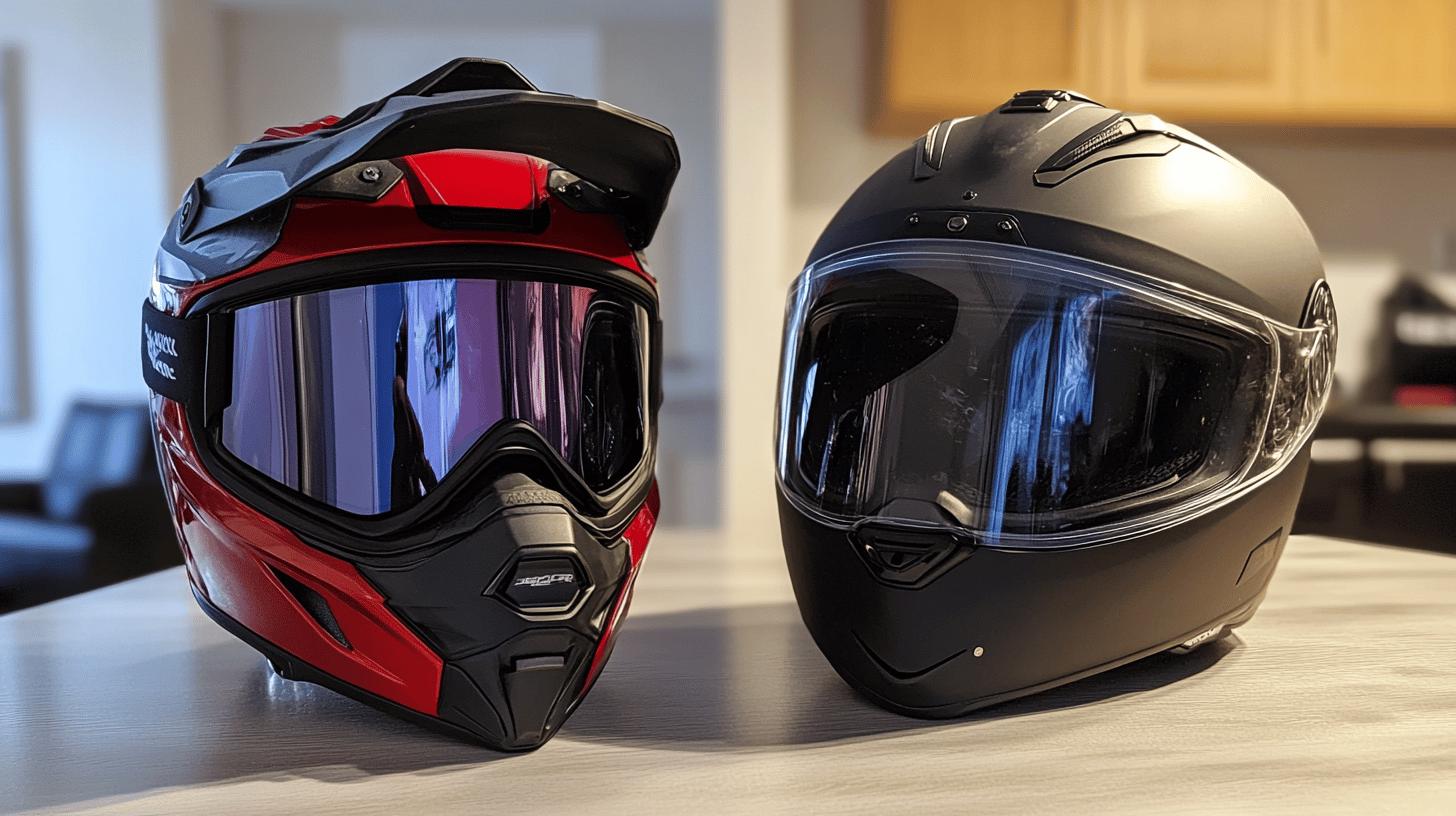
Snowmobile helmets and motorcycle helmets are crafted with distinct environmental considerations in mind. Snowmobile helmets are designed to withstand frigid temperatures, incorporating insulation to keep riders warm.
This insulation is complemented by ventilation systems that regulate temperature and prevent fogging. Dual-pane visors are a common feature, addressing the challenge of visor fogging in cold, moisture-rich conditions. Conversely, motorcycle helmets focus on safety and aerodynamics suitable for high-speed travel.
These helmets prioritize impact resistance and incorporate airflow mechanisms to keep riders cool during warmer weather rides.
-
Insulation: Snowmobile helmets are insulated for warmth, whereas motorcycle helmets prioritize ventilation.
-
Visor Design: Snowmobile helmets often include dual-pane visors to prevent fogging; motorcycle helmets focus on aerodynamic visors.
-
Ventilation Systems: Snowmobile helmets have fewer vents to maintain warmth, while motorcycle helmets are designed with more vents for cooling.
-
Weight: Snowmobile helmets are typically heavier due to added insulation.
-
Chin Bar Design: Snowmobile helmets may feature larger chin bars for enhanced protection against cold winds.
The design differences between snowmobile and motorcycle helmets significantly affect their performance. Snowmobile helmets excel in cold weather, offering features that maintain warmth and prevent fogging, crucial for safety in snowy conditions.
On the other hand, motorcycle helmets are optimized for protection at high speeds, with aerodynamic shapes that reduce air resistance and enhance riding comfort. These tailored designs ensure that each helmet type performs effectively in its intended environment, providing riders with the necessary protection and comfort.
Insulation and Ventilation Features
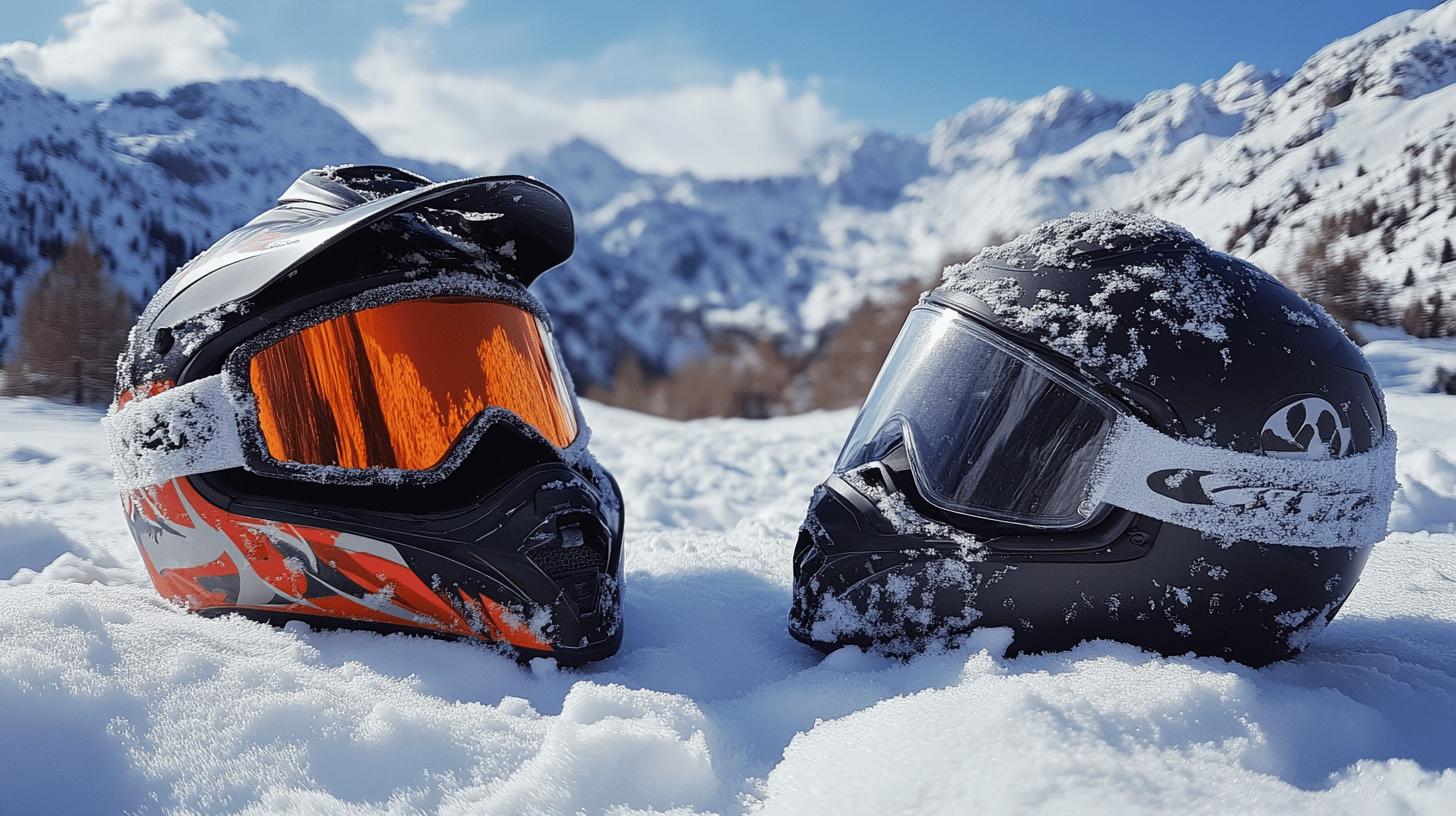
How does insulation in snowmobile helmets keep riders warm in cold environments? Snowmobile helmets are equipped with high-quality insulation to protect riders from frigid temperatures. This insulation is integral to the helmet's design, ensuring that body heat is retained while cold air is kept out.
The materials used in snowmobile helmets are specifically chosen for their thermal properties, which help maintain a stable internal temperature even in the harshest winter conditions. This design is crucial for comfort and safety, as it prevents the rider from experiencing the detrimental effects of prolonged exposure to cold, such as hypothermia or frostbite.
Why do motorcycle helmets have more vents compared to snowmobile helmets? Motorcycle helmets are crafted with ventilation systems that are optimized for airflow to keep riders cool during warmer weather rides. These helmets typically feature multiple vents strategically placed to maximize air circulation around the rider's head.
This design helps in regulating temperature and reducing sweat build-up, which is essential for maintaining comfort and visibility. The increased airflow provided by the ventilation systems not only enhances comfort but also contributes to safety by preventing visor fogging and ensuring that the rider remains alert and focused throughout the ride.
Visor and Eye Protection Technologies
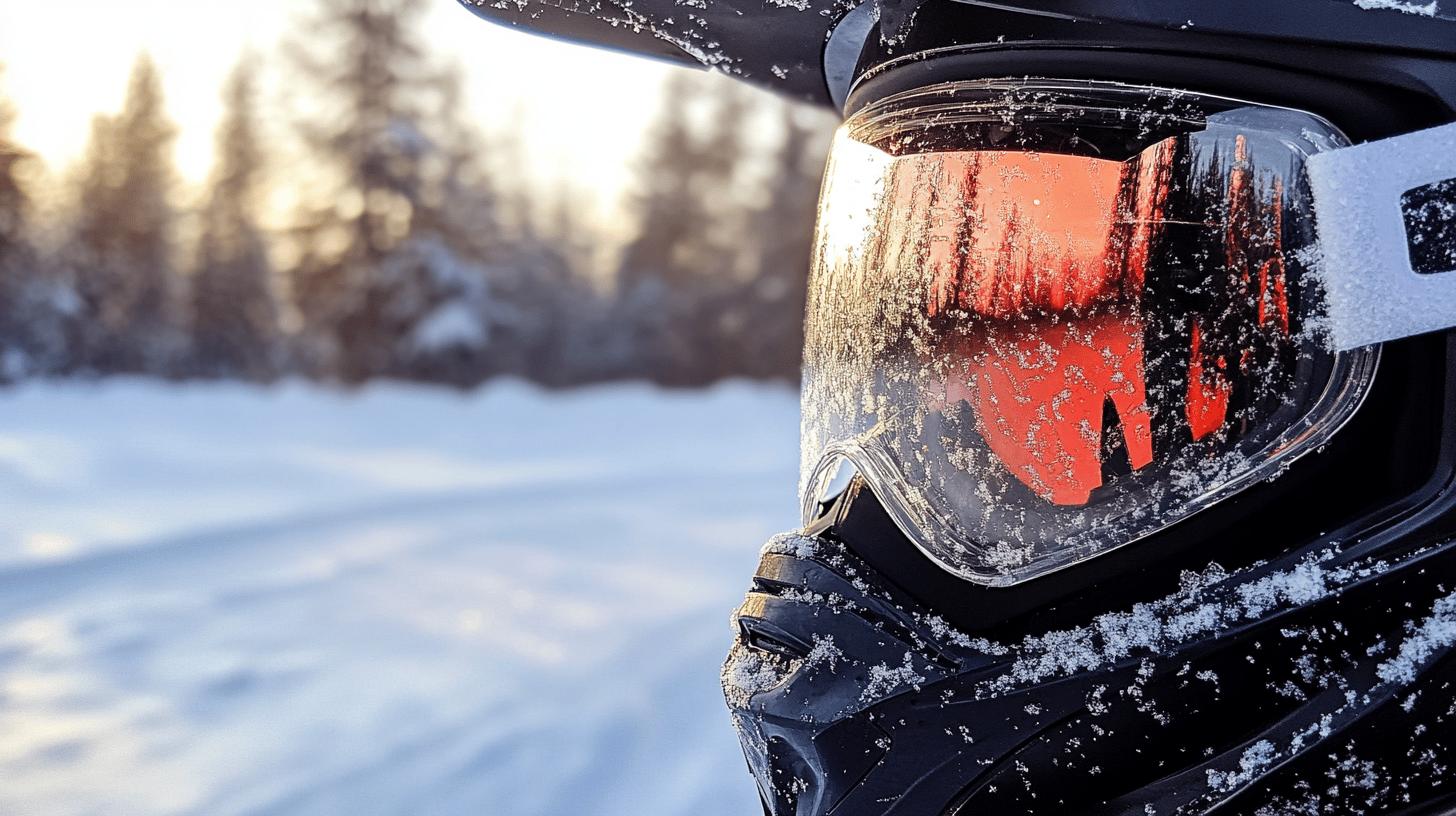
How do snowmobile helmets prevent visor fogging? Snowmobile helmets often incorporate dual-pane visors or heated shields. This is crucial in cold environments where breath and external moisture can quickly fog up the visor, obstructing visibility. Dual-pane visors work by creating an insulating layer between two panes, reducing the temperature difference that causes fogging.
Heated shields, equipped with a small heating element, actively prevent fogging by warming the visor surface. These technologies ensure clear vision, which is indispensable for safety in snowy and icy conditions.
Why do motorcycle helmets focus on aerodynamic visor design? Motorcycle helmets are designed with aerodynamics in mind to enhance stability and reduce drag at high speeds. The visors are shaped to allow smooth airflow, minimizing resistance which can otherwise cause fatigue and instability.
Additionally, these visors are often treated with anti-scratch and anti-fog coatings to maintain clarity without compromising their streamlined shape. The aerodynamic design is not just about speed; it enhances the rider's comfort and control by reducing wind noise and buffering.
Types of visors and anti-fog technologies used:
-
Dual-Pane Visors: Found in snowmobile helmets to create an insulating barrier against cold air.
-
Heated Shields: Used in snowmobile helmets for active fog prevention.
-
Aerodynamic Visors: Featured in motorcycle helmets for reduced air resistance.
- Anti-Fog Coatings: Applied to both helmet types to maintain clear vision.
The choice of visor and fog prevention technology reflects the unique demands of each riding environment. Snowmobile helmets prioritize clear vision in cold, fog-prone conditions through dual-pane and heated options.
Meanwhile, motorcycle helmets focus on maintaining visibility and comfort at high speeds through aerodynamic designs. These design considerations ensure that riders are well-equipped to handle the environmental challenges specific to their mode of travel.
Safety Standards and Certifications
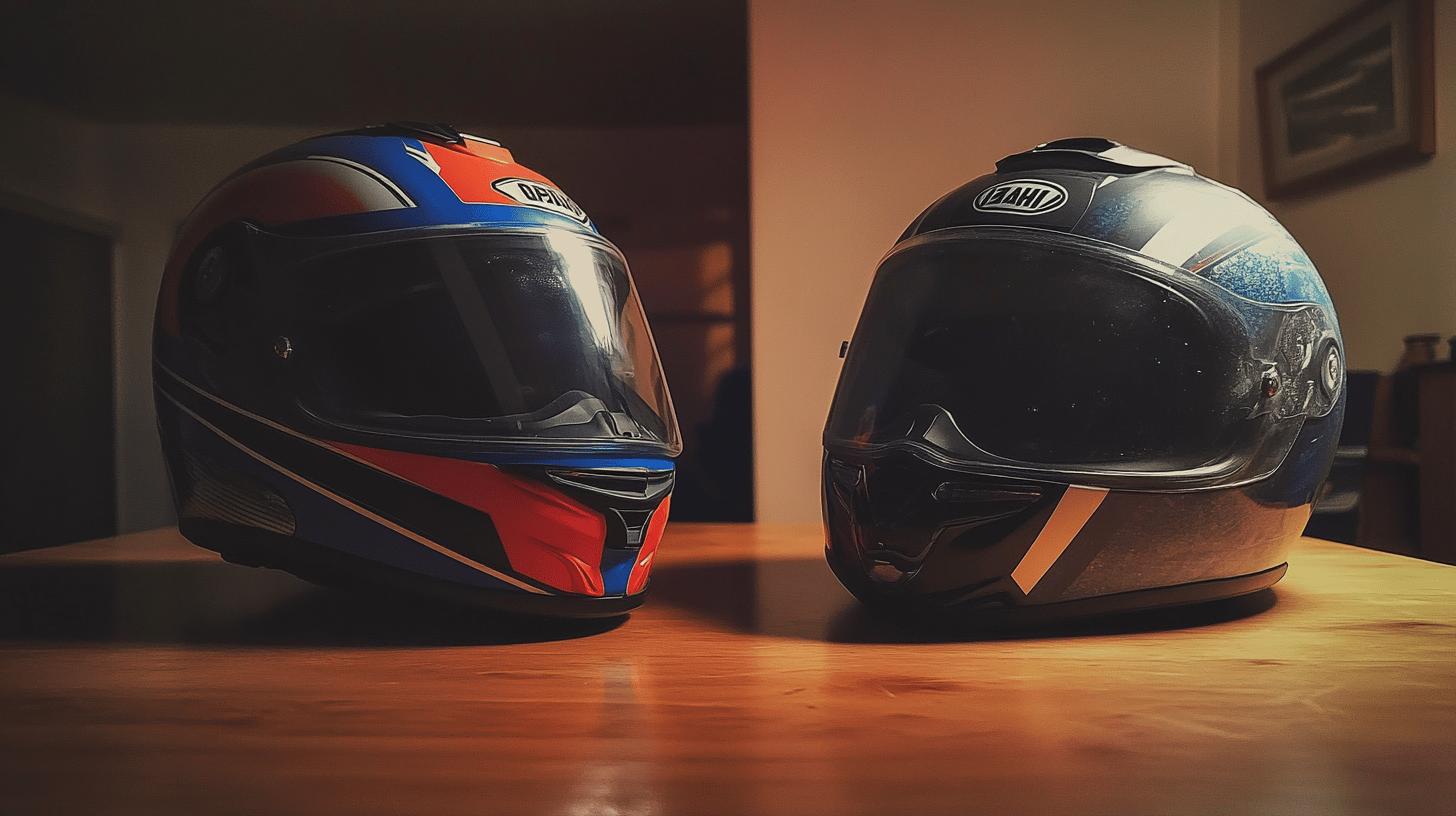
What certifications do snowmobile and motorcycle helmets require? Both snowmobile and motorcycle helmets must meet rigorous safety standards to be legally used on roads or trails. The most common certification is the Department of Transportation (DOT) approval, which ensures that helmets provide basic protection in the event of a crash.
Additionally, many helmets also meet SNELL standards, which are more stringent and require a higher level of impact resistance. European riders often look for the Economic Commission for Europe (ECE) certification, which is recognized internationally and tests for a broader range of safety features, including visor strength and strap durability.
These certifications guarantee that the helmets offer appropriate protection for their intended use, whether it's for snowmobiling in cold conditions or high-speed motorcycle travel.
How do these standards impact helmet design? Snowmobile helmets are optimized to withstand impacts that may occur in cold environments, such as hitting ice or snow. This requires them to have enhanced insulation and structural reinforcement. Motorcycle helmets, in contrast, are designed with aerodynamics in mind to protect against high-speed impacts.
The difference in design is influenced by the specific safety standards each type must meet, reflecting the unique demands of their respective environments. These standards ensure that helmets not only protect but also perform effectively under different conditions.
| Helmet Type | Certification Standard |
|---|---|
| Snowmobile Helmet | DOT, SNELL |
| Motorcycle Helmet | DOT, SNELL, ECE |
Weight and Comfort Level Comparisons
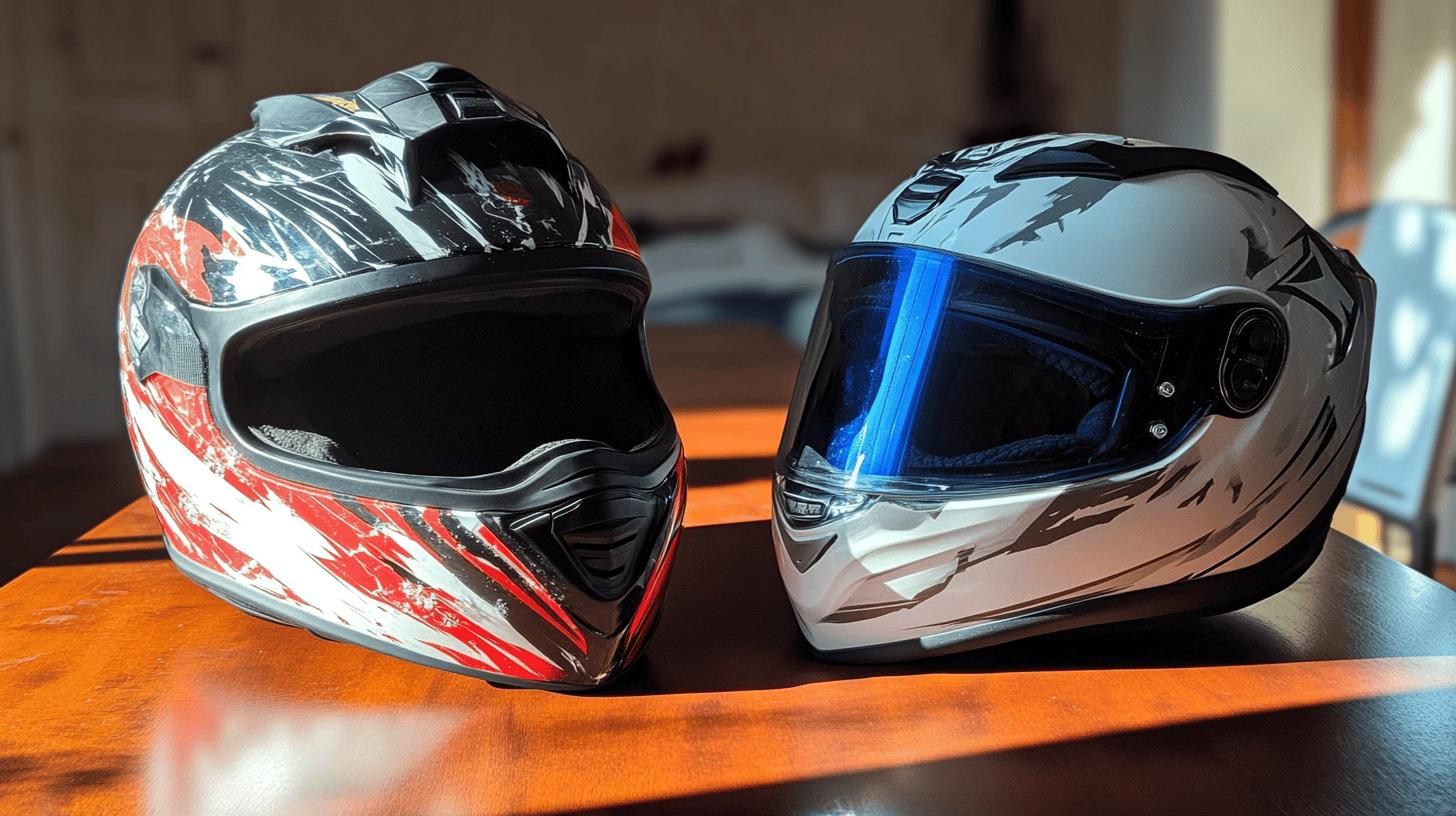
How do snowmobile helmets and motorcycle helmets differ in weight? Snowmobile helmets are generally heavier due to their extra insulation, which is crucial for providing warmth in cold environments. This insulation adds bulk, making these helmets feel more substantial on the head. The added weight can be a trade-off for the thermal protection it offers, which is essential when riding in icy conditions.
In contrast, motorcycle helmets are typically lighter, weighing between 1 to 3 pounds, as they focus on speed and agility. The lightweight design is achieved by using materials and structures that maximize protection while minimizing weight, enhancing maneuverability and endurance during long rides.
How does the weight difference affect comfort levels? The weight of a helmet significantly impacts comfort, especially during prolonged use. Snowmobile helmets, with their added insulation, can feel more cumbersome, potentially leading to quicker fatigue, especially when worn for extended periods. However, the warmth they provide is vital for comfort in cold weather.
Motorcycle helmets, being lighter, contribute to less neck strain and greater ease of movement, making them more comfortable over long distances. The agility afforded by their lighter weight enhances the riding experience, allowing for quicker head turns and reduced fatigue. The choice between the two comes down to the specific needs of the riding environment, factoring in both protection and comfort.
Helmet Adaptability and Usability in Different Conditions
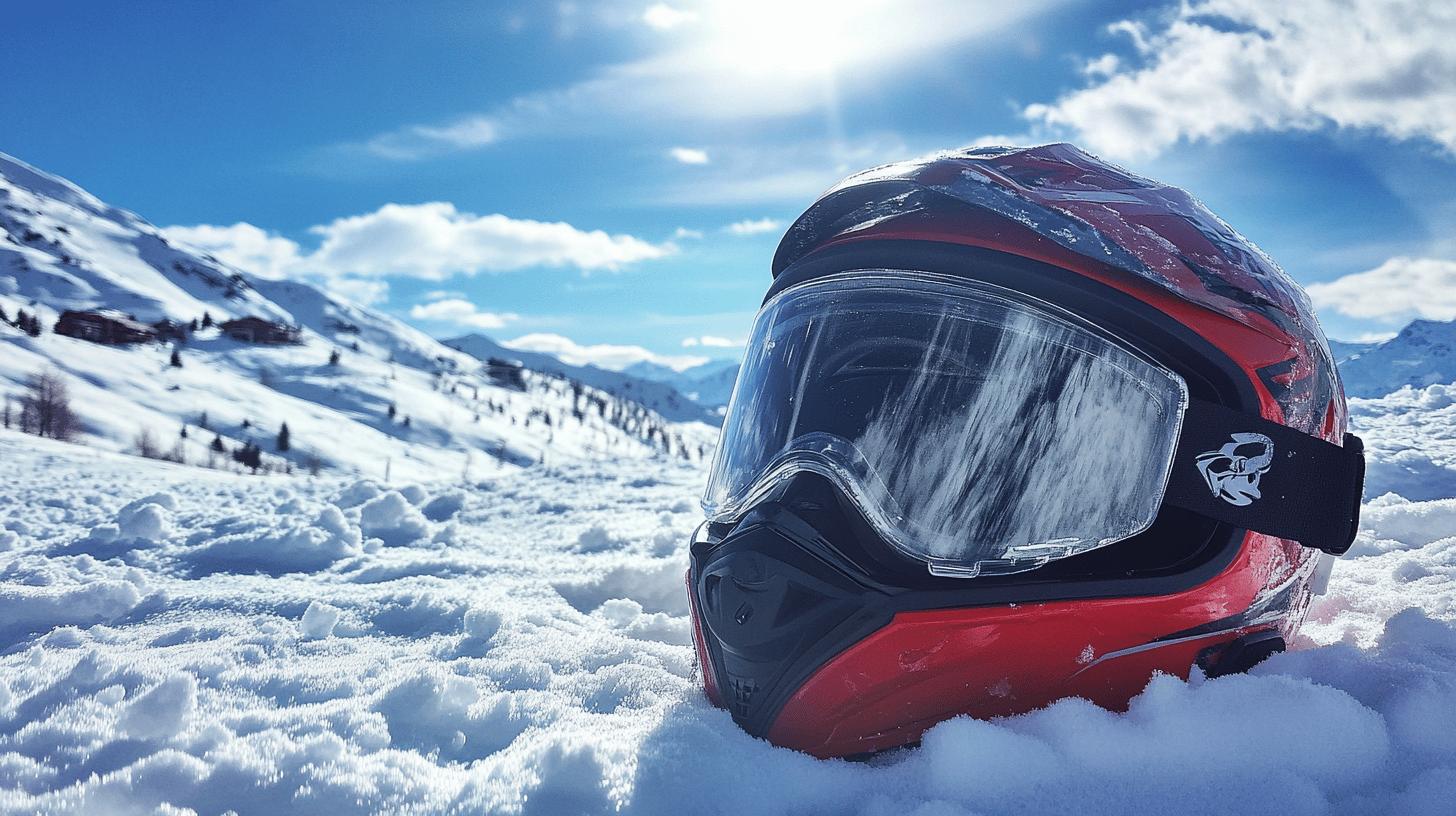
How are snowmobile helmets designed for specific conditions? Snowmobile helmets are engineered to excel in cold weather environments. They incorporate features such as thermal insulation and dual-pane visors to maintain warmth and prevent fogging.
These helmets are built to handle the unique challenges of snowmobiling, like extreme cold and moisture, ensuring riders stay comfortable and safe. The structural design, including a larger chin bar and fewer vents, helps protect against cold winds while maintaining a stable internal temperature.
In contrast, motorcycle helmets are tailored for high-speed and varied riding conditions, focusing on aerodynamics and impact resistance. They provide excellent airflow through multiple vents, which helps keep the rider cool and comfortable during long rides or in warmer climates.
Motorcycle helmets also prioritize a lightweight design, enhancing agility and reducing fatigue. This makes them ideal for handling the demands of road riding, where speed and maneuverability are paramount.
Helmet Usability in Extreme Weather
What makes snowmobile helmets suitable for extreme weather? Snowmobile helmets feature several elements specifically designed for cold weather usability. The thermal lining plays a crucial role in providing insulation, keeping the rider warm despite frigid temperatures.
Additionally, breath guards are included to direct exhaled air away from the visor, minimizing fogging and maintaining clear visibility. These features, combined with the overall robust construction of snowmobile helmets, ensure they are well-suited for the harsh conditions encountered during snowmobiling adventures.
Pricing and Brand Comparisons
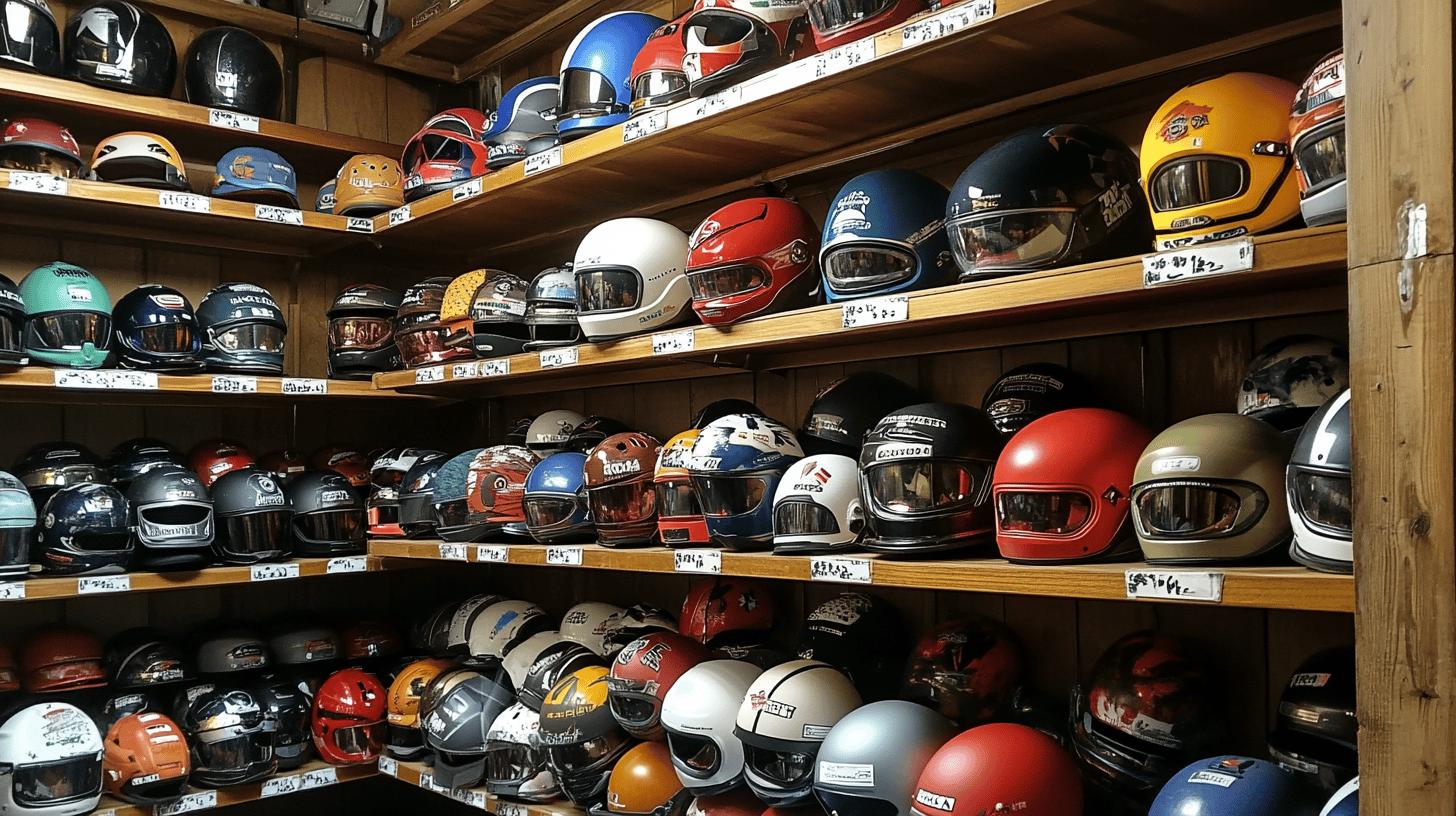
How do pricing and brands differ between snowmobile and motorcycle helmets? Snowmobile and motorcycle helmets are priced based on design complexities, materials used, and the specific features they offer.
Snowmobile helmets, designed for cold weather, often incorporate advanced insulation and anti-fog technologies, potentially increasing their cost compared to some motorcycle helmets. Motorcycle helmets, focused on aerodynamics and impact resistance, also vary widely in price depending on the materials—such as carbon fiber or polycarbonate—and additional features like integrated Bluetooth systems.
Pricing trends show that high-quality snowmobile helmets may command a premium due to their specialized features. Meanwhile, motorcycle helmets can range from budget-friendly options to high-end models depending on brand reputation and technology integration.
Popular brands for snowmobile helmets:
-
Ski-Doo: Known for robust designs tailored for extreme cold.
-
509: Offers advanced anti-fog and ventilation technologies.
Popular brands for motorcycle helmets: -
Shoei: Renowned for aerodynamic designs and safety.
- Bell: Offers a range of helmets from entry-level to professional racing standards.
Final Words
Exploring the differences between snowmobile and motorcycle helmets reveals each helmet's specific design and functionality tailored to unique environments. Snowmobile helmets focus on insulation and fog prevention, while motorcycle helmets emphasize aerodynamics and lightweight construction for high-speed conditions.
Understanding how snowmobile helmets differ from motorcycle helmets enhances safety and performance for riders in diverse settings. Selecting the right gear ensures comfort and protection, ultimately enriching the riding experience for enthusiasts who seek the best gear for their adventures.
FAQ
How do snowmobile helmets differ from motorcycle helmets?
Snowmobile helmets are designed for cold environments, featuring insulation and ventilation systems. Motorcycle helmets prioritize safety and aerodynamics, focusing on impact resistance and airflow at high speeds.
Are snowmobile helmets DOT approved?
Yes, snowmobile helmets can be DOT approved. They must meet specific safety standards set by the Department of Transportation to be considered certified.
Can I use a motorcycle helmet for snowmobiling?
Using a motorcycle helmet for snowmobiling is not recommended. Motorcycle helmets may lack the insulation and ventilation needed for cold environments, impacting rider comfort and performance in snowmobiling conditions.
Are car racing helmets the same as motorcycle helmets?
Car racing helmets and motorcycle helmets serve different purposes. Car racing helmets are designed for enclosed environments and may not provide the same level of impact protection and environmental adaptability needed for motorcycle riding.
What is the difference between a bike helmet and a motorcycle helmet?
Bike helmets and motorcycle helmets differ in construction and purpose. Motorcycle helmets are built for high-speed impact protection and feature stronger materials and aerodynamic designs compared to bike helmets.
Why do snowmobile helmets have visors?
Snowmobile helmets have visors to protect riders from cold winds and snow glare. Visors often include fog-reducing technologies, such as dual-pane or heated shields, to enhance visibility in cold conditions.

Ryan Thompson is a 35-year-old sport bike enthusiast known for his adventurous spirit. With years of weekend rides and exploring new roads, Ryan brings fresh insights and firsthand experience to ProtectiveGearz. His energetic approach and passion for the latest gear make him a trusted source for riders seeking up-to-date advice.



